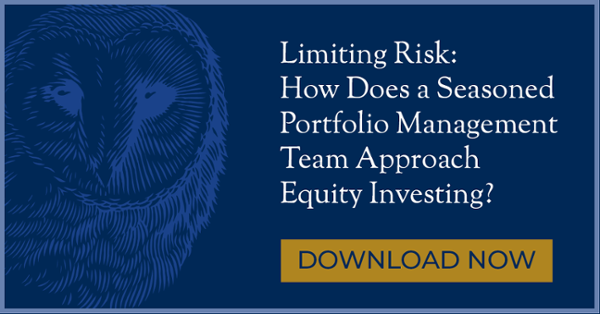Health Care Sector Calls for Valuation Discipline
Innovation within the biotechnology, medtech and diagnostics industries makes the health care sector an exciting area to invest. Valuations also make it precarious.
At Dana funds, we have balanced the risk and opportunity within the sector with a steadfast focus on valuation discipline. We are investing in innovation within the sector – but at what we believe is a reasonable price. We also find opportunity with companies that have simpler stories, but nevertheless benefit from long-term, secular tailwinds affecting health care.
Stocks within both camps have been large contributors to performance over the past year, and are a primary reason stock selection within the health care sector has contributed to relative performance for our Epiphany Fund.
Reasonably Valued Innovation
The pace of innovation within the health care sector continues to accelerate, but we see risk in the valuations of some biotech stocks. Some companies trade at excessive valuations despite having just one or limited products undergoing early-stage clinical trials. Valuations for such companies have binary outcomes, and the stock can fall substantially if a clinical trial fails. We have generally avoided these companies.
We still find innovative pharmaceutical and biotech companies to invest in. But the relative valuation screens that are part of our investment process have typically pointed us to more established companies who trade at a lower valuation than their peers. The multiples for these stocks can experience a re-rating as the rest of the market comes to understand the growth potential of their therapies.
Bristol Myers Squibb, a large contributor to performance for the Epiphany Fund and other Dana funds, serves as an example. In the third quarter of 2019, the stock traded at just six times earnings, as investors questioned how Bristol Myers would integrate Celgene, a biotech company it acquired. The market didn’t like the acquisition because Celgene’s lead product faced future generic competition. Additionally, modestly disappointing trial results for Bristol Myers’ oncology treatment, OPDIVO, also weighed on the stock.
We did our research and had high conviction in OPDIVO’s potential, viewing the trial results as modest issues the company could address in further trials. We also liked the potential of the combined company after the merger, and felt the market wasn’t giving Celgene enough credit for some of the treatments in its pipeline.
When a health care stock trades at a valuation as low as Bristol Myers was, it doesn’t take much to drive the stock higher to a valuation at least in line with its peers. We’ve seen that thesis play out over the past year as the company received a couple positive trial results for OPDIVO and as the Celgene deal closed with relatively few hiccups.
Straightforward Growth, Undemanding Multiples
We also see opportunity among health care companies with simple – but underappreciated – growth, who may get overlooked by some investors because they don’t have the exciting potential of a new therapy or diagnostic tool. These companies may not be revolutionizing modern health care, but nevertheless benefit from long-term demographic and secular tailwinds.
Hill-Rom Holdings serves as an example from this camp. The company primarily sells beds to hospitals. Our relative valuation screen identified that the stock traded at a discount to other medical equipment companies, a gap that widened throughout 2019.
We did our research and liked the growth potential as Hill-Rom went through a new product cycle that introduced purpose-designed beds and integrated monitoring that should improve health care outcomes. The stock has appreciated as the new cycle has led to earnings growth that exceeded consensus expectations. Long term, we continue to like Hill-Rom’s growth potential as an aging population continues to demand more hospitalization services.
Looking Ahead, Health Care Sector Will Continue to Require Discipline
Even after a broad market sell-off in March, momentum around pockets of the health care sector remains high. The S&P 500 health care sector experienced its best monthly gain in 20 years in April, and the large cap S&P biotech sector gaining 21% that month.¹
As enthusiasm remains high, we will continue to rely on our relative valuation approach to find both reasonably valued innovation and underappreciated growth opportunities.
¹https://www.cnbc.com/2020/05/01/investor-hope-pushes-biotech-stocks-to-best-monthly-gain-in-two-decades.html
Dana Large Cap Equity Fund top-ten holdings as of March 31, 2020: Microsoft Corp (2.70%), Apple, Inc. (2.66%), Intel Corp (2.43%), Amazon.com, Inc. (2.34%), Alphabet Inc. Class A (2.32%), LAM Research Corp. (2.28%), Walmart, Inc. (2.27%), Merck & Co, Inc. (2.20%), T-Mobile, Inc. (2.15%), Visa, Inc. (2.15%)
Dana Small Cap Equity Fund top-ten holdings as of March 31, 2020: Five9, Inc. (2.52%), Southwest Gas Corp (2.43%), Horizon Therapeutics (2.25%), Emergent BioSolutions, Inc. (2.24%), Qualys, Inc. (2.22%), Coherus BioSciences, Inc. (2.19%), Rapid7, Inc. (2.17%), BioTelemetry, Inc. (2.13%), Repligen Corp (2.12%), Chesapeake Utilities Corp (2.10%)
Dana Epiphany ESG Equity Fund top-ten holdings as of March 31, 2020: Microsoft Corp (2.72%), Apple, Inc. (2.68%), Alphabet, Inc. Class C (2.67%), Amazon.Com, Inc. (2.43%), Intel Corp (2.23%), General Mills, Inc (2.22%) LAM Research Corp (2.16%), Hill-Rom Holdings, Inc. (2.12), Fidelity National Information Services, Inc. (2.10%), Pepsico, Inc. (2.07%)



